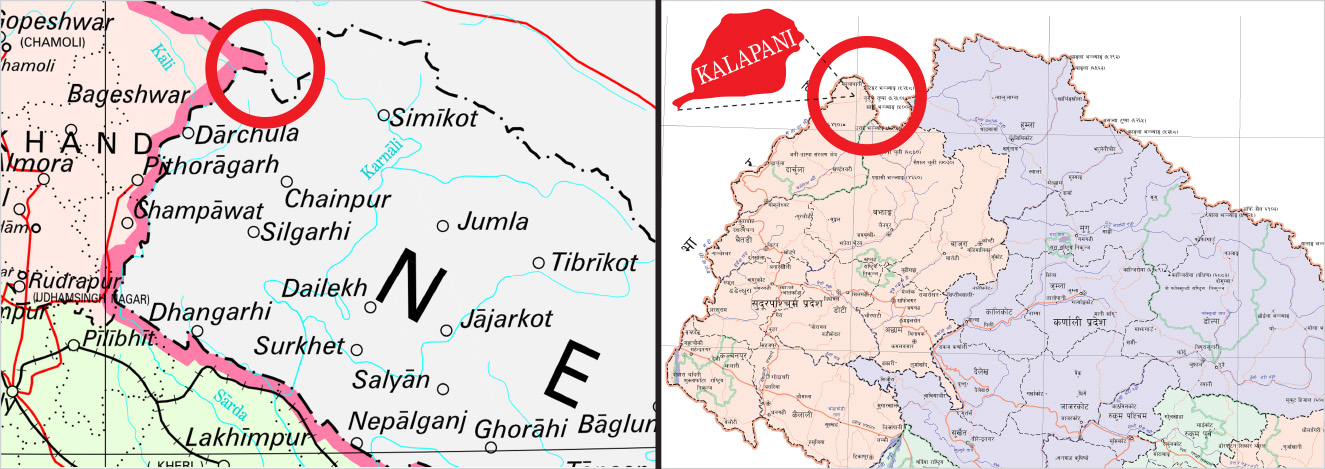
Nepal over the past weeks has repeatedly seen both anti-India and anti-China protests, concerning charges that both of the country’s giant neighbors are claiming pieces of its territory. On Nov. 19, President Xi Jinping was burned in effigy at one protest. Confusingly, nearly all accounts (seemingly drawing from one report by Asian News International in Hindustan Times) placed the protest in “Saptari, Bardiya, Kapilvastu district,” but these are actually three different districts, not even bordering each other, and all along the border with India rather than China. (See Wikipedia entries for Saptari, Bardiya and Kapilvastu districts.) This may loan credence to claims that the anti-China protests were fomented by India. A week earlier, protesters in Kathmandu burned a map of India, Al Jazeera reports.
All this comes in response to a report released by Nepal’s Survey Department finding that China has encroached upon 36 hectares of Nepalese territory, largely due to expansion of roads along the border in Chinese-administered Tibet. The enroachments are said to have taken place in Karnali zone, and Rasuwa and Sindhupalchowk districts. But the survey was undertaken in response a new map issued by Delhi with India’s change to the administrative status of Kashmir. This map showed a 35-square-kilometer area of territory controlled by India but claimed by Nepal as part of India’s Uttarakhand state. This is the strategic Kalapani area, at the juncture of the borders of China, India and Nepal, controlled by India since the Sino-Indian War of 1962. It was last at issue in 2015, when India blocked roads into the area, sparking a brief crisis with Nepal.
Nepalese media have speculated both that the anti-China protests were fomented by India and that the anti-India protests were fomented by China. (Swarajya, Nov. 19; Kathmandu Post, Nov. 4)
Multiple ethnic struggles may come into play here. The Madhesi people of Nepal’s south held a “Unity Rally Against Color Discrimination” in Kathmandu Nov. 24. India has long supported Madhesi demands for changes to Nepal’s constitution granting them greater autonomy and political power. (Nagarik Network, Nov. 24)
Last month, during Xi Jinping’s visit to India and Nepal, protests by Tibetans living in Nepal were headed off by pre-emptive arrests. Among 22 “Free Tibet” actvists detained, 11 were said to be Tibetan refugees. (The Himalayan, Kathmandu, Oct. 13)
Map via Kathmandu Post




